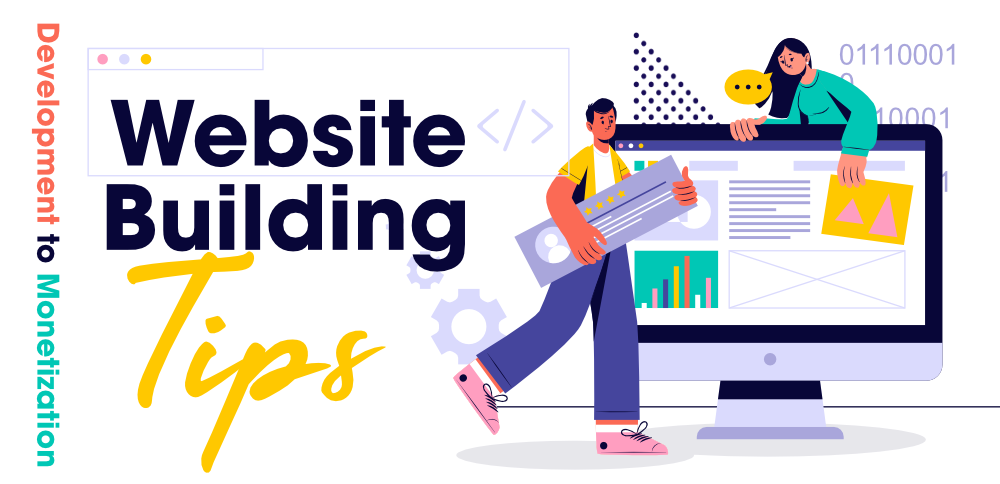When we speak about web development, we usually cover a vast array of topics that include what technology stack we need to use to build an end-to-end website, how and where to host the website, how to maintain it and keep updating it regularly, various Search Engine Optimization (SEO) techniques to improve the ranking of the website in search engines, how to monetize it and make it a part-time or even full-time source of income.
In this article, let’s discuss all the above-mentioned aspects of building, hosting, maintaining, and monetizing a website right from scratch.
1. Deciding appropriate Technological Stack
Before starting to build a website, you need to figure out what frameworks and tools you are going to use to build the website. You need to think about the programming languages, frameworks for client-side and server-side scripting, databases to be used, architecture of the website, and how to handle dynamic changes on the website. The answer to this question might vary according to the experience you have with programming languages. If you are not from a programming background, you have to take another route to build a website. Let’s discuss different ways through which you can build a website.
Hard Coding a Website – This would work for you if you are from a programming background. You can easily choose the stack which you want according to your needs. The most popular one is to use the MERN stack development approach. You can use a single programming language called JavaScript to build all the layers of the website. You can use ReactJS which a frontend UI framework and can handle dynamic changes very easily, NodeJS can be used to develop the server-side scripting and MongoDB is a NoSQL database & stores records in the form of key-value pairs just like JSON objects. You can use Express.js as a template for NodeJS modules.
Using Website Builders – If you don’t have a programming background, you can easily use one of the several website builders to build your website. They provide excellent features such as drag and drop tools, inbuilt SEO features, etc. which easily allows you to build a website within a few hours. They also have several pre-built templates. The most popular website builders are WordPress, Wix, GoDaddy, etc.
2. Hosting the Website
The next step is to decide where and how to host a website. You need to buy a domain name from one of the several domain name providers and then use any hosting service to host your website. Several providers such as GoDaddy, etc. helps you to buy a domain and host your code at the same place. If you are building a website using WordPress, they will provide you with a free domain name according to the plan which you are taking and you can either host the website on WordPress itself or can use Bluehost or other such websites to host your website as they provide excellent integration features with WordPress.
3. Maintaining the Website
By now, if you have already built and hosted a website, you are done with the tedious part. However, maintaining a website regularly is as much important as building a beautiful and engaging website. You need to update and post new articles & content regularly as per the niche. Also, you have to use Search Engine Optimization (SEO) techniques in order to ensure that your website ranks higher in the search engine. You need to search for higher ranking keywords in your domain and use those keywords more frequently on your website. Indeed, regular content generation, using SEO techniques, having a good and readable website design will have a much greater impact on your search engine ranking.
4. Monetizing a Website
After you’ve built a website and started gaining a good amount of visitors daily, you can think of monetizing the website to earn a part-time or even a full-time income. Firstly, to track the number of views and user demographics, you can use Google Analytics or if you are using WordPress, you have that option with the WordPress plan. Furthermore, there are several ways to monetize a website. To name a few, you can put ads from various ad networks, you can do affiliate marketing, you can sell your own products such as e-books or tutorials, you can publish premium content for paid users, etc. The most popular among them is displaying ads on your website. There are several ad networks that enable you to do so. The most popular ones include Google AdSense, Infolinks, media.net, etc. They have various models such as CPC, CPM, CPA, etc. They pay you in accordance with the number of clicks (Cost per Clicks) or the number of impressions (Cost per mile of impressions), etc. To earn a considerable amount of money using ad networks, you need to make sure that you have the enough number of visitors visiting your website daily and most of your visitors are from tier 1 countries. Also, these ad platforms have their approval processes to make sure that you don’t publish illegal and plagiarized content on your website.
We’ve discussed an overall description of how to build, host, maintain and monetize a website. You need to make sure that you use the right tools to build the website so that in the long run, you don’t need to change or tweak your website in case, you get enough traction on your website & your website can take up the load. Also, if you are thinking of monetizing your website, you need to make sure that you publish authentic & quality content regularly.





